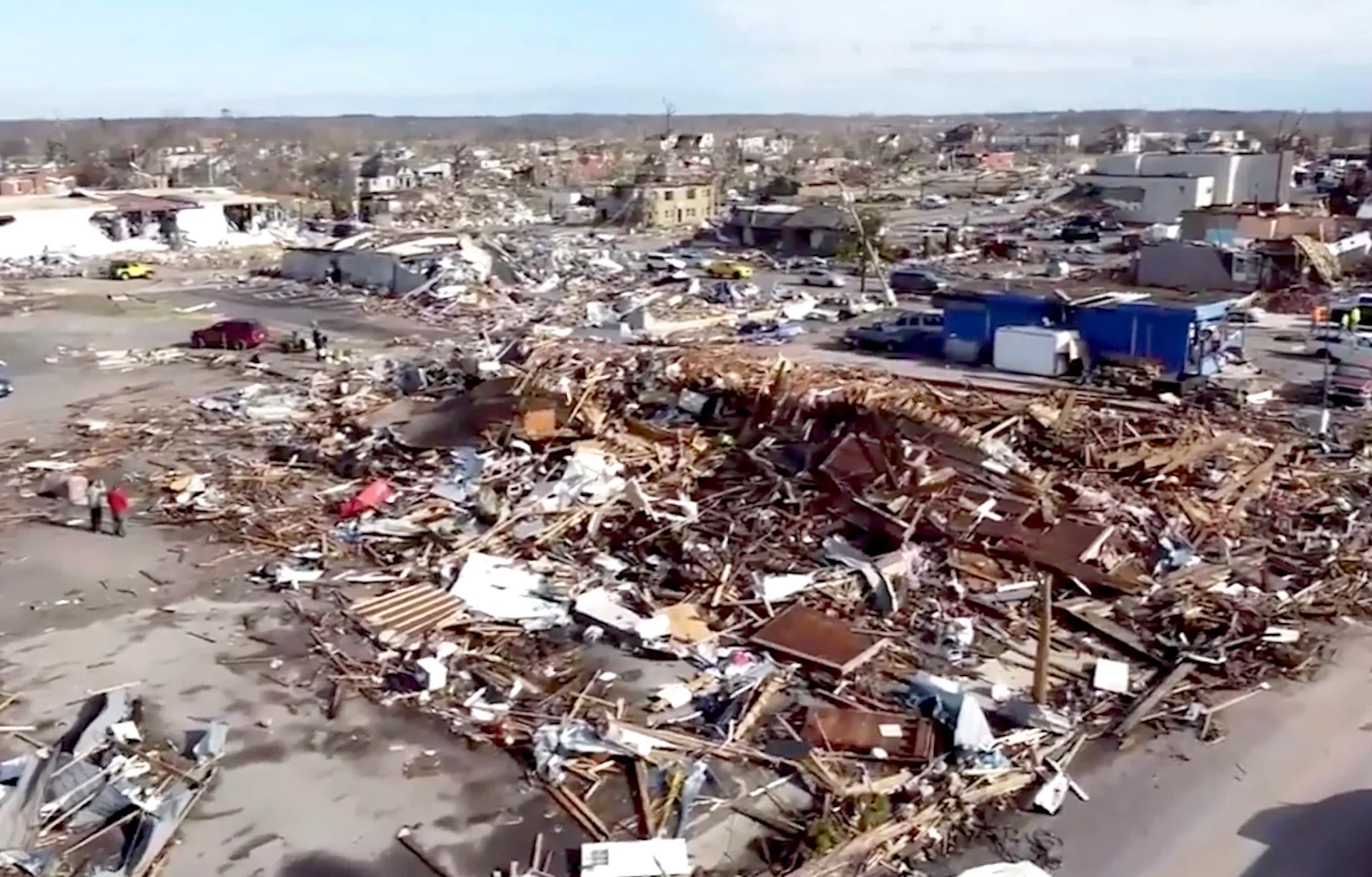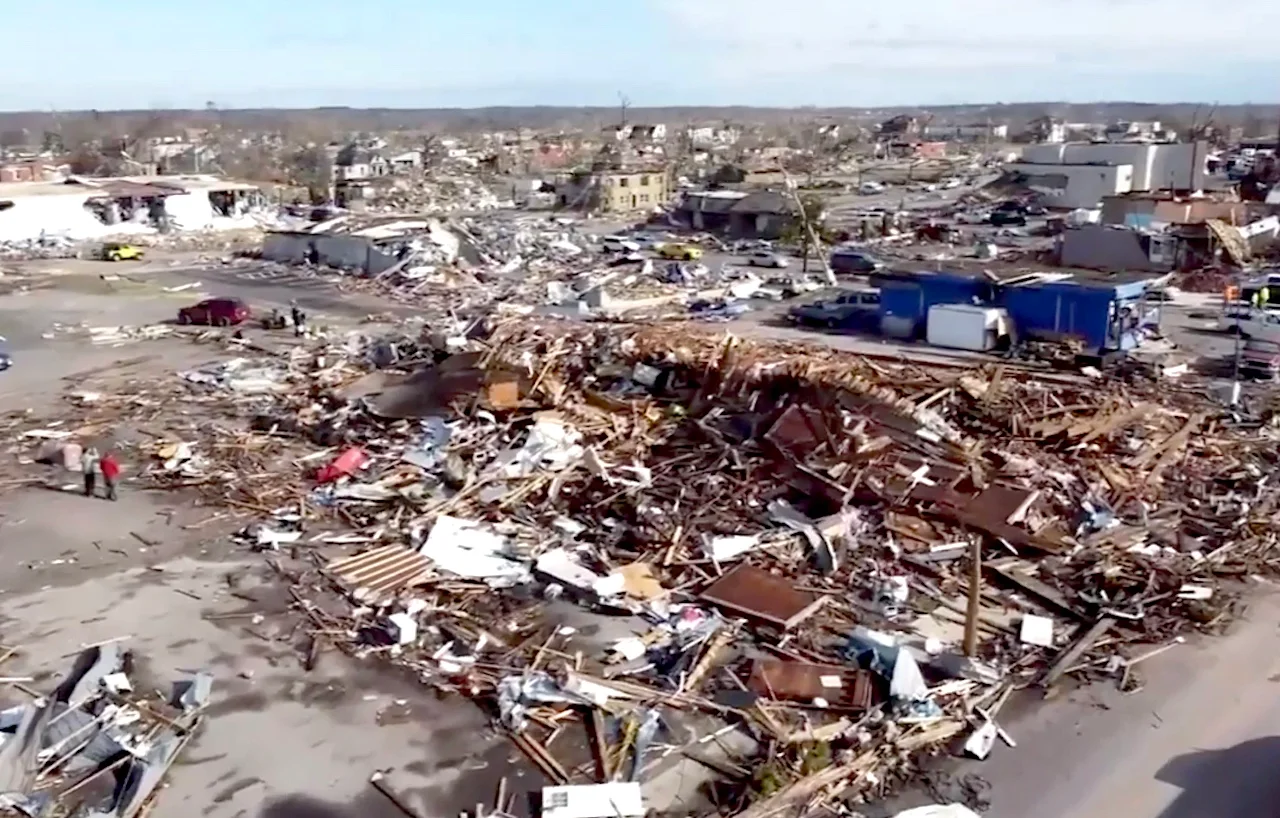
Could Canada see a devastating long-track tornado similar to U.S.?
Parts of the U.S. were recently left in ruins by a tornado outbreak that included a long-track twister that trekked through multiple states, potentially setting a new record. Is it possible that Canada could be hit with a similar destructive and long-lasting twister in the near future?
Kentucky officials continue to comb through the damage and search for the missing following a deadly tornado outbreak on Dec. 10, resulting in the deaths of at least 74 people in the state.
The southeastern state and 5 five others were hit with a barrage of tornadoes, killing a total of 88 so far, according to media reports.
SEE ALSO: 'From grief to shock': Tornadoes kill at least 74 in Kentucky
As part of the outbreak, one of the tornadoes trekked across a long stretch of terrain through four states -- and could end up breaking records as a long-track twister.
As of now, the March 18, 1925 Tri-State Tornado that occurred in the United States is still the deadliest and longest-tracked twister ever recorded, travelling a distance of 352 kilometres through Missouri, Illinois and Indiana.
In Canada, the longest-tracked tornado is 115 kilometres, occurring in May 1985 in Ontario. It moved across from Grand Valley to Tottenham, and was given a F4 (Fujita scale) damage rating.

(Wesley Roberts/Storyful)
The Weather Network Storm Hunter and meteorologist Mark Robinson recently interviewed Dave Sills, executive director of the Northern Tornadoes Project, about Friday's potential record-breaking, long-duration twister south of the border, and whether or not a similar one could occur in Canada.
Since Canada is a vast country with lots of open spaces distanced between the major cities, Sills hopes that a long-track tornado would miss them, but there is "always that chance" of a direct hit in the near future, he said, especially since populated centres keep expanding.
"Well, we know we've had long tracks in Ontario and Quebec. There's been long tracks on the Prairies, as well. Those are some areas where we can get the longest tracks. My bet would be on Saskatchewan," said Sills. "It gets very big thunderstorms in the middle of summer that can just go and go. Supercells that are very strong hold together well."
Sills said the conditions that came together to produce the tornado outbreak in December was "very unusual" and more reflective of a spring setup from March to May in the U.S.
"So, you've got warm air coming from up the Gulf of Mexico [and] all that moisture, [and] big jet stream coming through with a front coming down. All the conditions you kind of expect in a spring thunderstorm setup [happening] in December," said Sills.
Thumbnail courtesy of Wesley Roberts | Storyful.
Follow Nathan Howes on Twitter.
